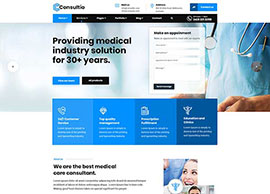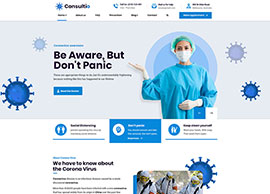In October 2024, the Food Safety and Standards Authority of India (FSSAI) notified Food Safety and Standards (Contaminants, toxins and Residues) First Amendment Regulations, 2024. This amendment, set to take effect from April 1, 2025, addresses crop contaminants and naturally occurring toxic substances; antimicrobials and other drugs used in veterinary practices.
A major highlight of this amendment is the prohibition of antibiotics at any stage of production of milk and milk products, meat and meat products, poultry and eggs, aquaculture and its products.
This is notably different from the previous regulation that did not permit use of antibiotics at any stage of processing. In addition, milk and milk products have been introduced as an additional sector where this prohibition would apply, expanding the scope beyond meat, poultry, and aquaculture.
Specifically, three classes of antibiotic classes — glycopeptides, nitrofurans, and nitroimidazoles, and five antibiotics ─ carbadox, chloramphenicol, colistin, streptomycin (and its metabolite dihydrostreptomycin), and sulphamethoxazole, have been prohibited in food animal production.
The Centre for Science and Environment (CSE) has previously highlighted the use of many of these antibiotics in animal food sectors. Some of these antibiotics were however prohibited earlier in specific sectors.

This amendment is an important milestone as until now, only colistin was prohibited in 2019 by the Union Ministry of Health and Family Welfare (MoHFW) in all food producing animals. However, there is no publicly available data of any testing or monitoring, if conducted, to confirm effective implementation of colistin ban on the ground.
In 2021, the Union Ministry of Agriculture and Farmers Welfare (MoA&FW) had issued a draft order which prohibited import, manufacture or formulation of streptomycin + tetracycline for use in agriculture in India with effect from February 1, 2022, and talked about a complete ban on use to be enforced from Jan 2024.
This decision followed earlier recommendations from the Registration Committee (RC) under the Central Insecticides Board and Registration Committee (CIBRC) on phasing out the use of streptomycin and tetracycline, according to the availability of alternatives.
However, when CSE followed up with CIBRC, it came out that the order is still not enforced and work related to alternatives is underway to inform regulatory decisions.
Guidelines for regulating coastal aquaculture notified in March 2024, prohibits 5 antibiotic classes and 5 antibiotics in coastal aquaculture, which is largely meant for export.
This guideline superseded the earlier guideline from 2005. Out of the antibiotics and antibiotic classes prohibited in coastal aquaculture, now three classes (Glycopeptides, Nitrofurans and Nitroimidazoles) and two antibiotics (Chloramphenicol and Sulphamethoxazole) are also prohibited by FSSAI in all types of aquaculture.
This means these are banned in freshwater aquaculture. But for the remaining antibiotics like nalidixic acid, neomycin and a class of fluroquinolones, these still remain unregulated in freshwater.
Revised tolerance limits for antibiotics in food animal production
The amendment also revises the list of antimicrobials and other veterinary drugs for their tolerance limits in food. Focusing on antibiotics, six new antibiotics ─ amoxicillin, cephalexin, gentamicin, penicillin G/ benzylpenicillin, sulfamethazine and sulfadimethoxine ─ have been added to the existing list of 21, bringing the total number to 27.
Of these six, CSE has previously reported the use of amoxicillin, cephalexin, gentamicin and penicillin in Indian dairy as well as poultry sector. Tolerance limits for all remain the same, except for cefphacetrile and trimethoprim, where limits have been increased in case of milk.
In comparison to this, the earlier regulation called Food Safety and Standards (Contaminants, Toxins, and Residues) Second Amendment Regulations, 2018, provided tolerance limits for 31 antibiotics had been mentioned. These regulations were originally scheduled to come into effect from Jan 1, 2019, but later on it was extended till April 1, 2019, based on stakeholder inputs who had highlighted challenges with compliance.
In March 29, 2019, FSSAI issued a direction wherein it reduced the number of antibiotics to be monitored from 31 to 21, excluding ten out, and also mentioned that it will continue to work on possible deletion or changes in tolerance limits for the remaining ones.

Even after five years, the regulatory gap left by exclusion of the ten antibiotics ─ except for colistin and dihydrostreptomycin/streptomycin which have now been prohibited—remains unaddressed. For the remaining eight excluded, two are critically important antimicrobials (CIAs) ─ tilmicosin and tylvalosin tartarate, and two are highest priority critically important antimicrobials (HPCIAs) ─ cefquinome sulphate and enrofloxacin.
CIA and HPCIA are categories of antimicrobials defined by the World Health Organization based on their importance in human medicine (see Box: WHO’s list of medically important antimicrobials, 2024). Cefquinome, tylvalosin and enrofloxacin were found to be used in the food animal sector by CSE earlier.
While many of these antibiotics such as enrofloxacin or tylvalosin, are primarily used in animals, there is a possibility that it could lead to cross-resistance in bacteria against other antibiotics of the same class. A robust mechanism is therefore needed that includes proper testing, inspection, and enforcement measures to confirm that these antibiotics are not misused.
Additionally, several of the antibiotics with tolerance limits are also CIAs (apramycin, erythromycin, neomycin, and tylosin) and HPCIAs (ceftiofur, danofloxacin, and flumequine), and many of them are also used in food animals. Although setting tolerance limits for them helps monitor their use, however, given their critical role in human medicine, these should be considered for phasing out in future.









































2 Comments
Riva Collins
It’s no secret that the digital industry is booming. From exciting startups to need ghor
global and brands, companies are reaching out.
Obila Doe
It’s no secret that the digital industry is booming. From exciting startups to need ghor hmiu
global and brands, companies are reaching out.